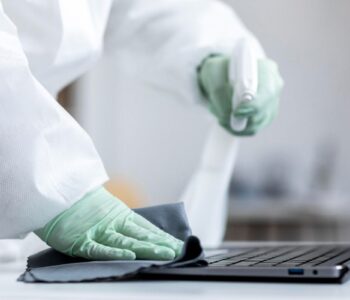
Cleaning and Disinfecting: The 6 Stages of Cleaning for Clinical and Hygiene-Sensitive Settings
Posted on April 22, 2025
Maintaining high standards of hygiene in clinical, dental, and aesthetic environments is a non-negotiable aspect of professional practice. Whether it’s a hospital, dental clinic, GP surgery, or tattoo parlour, ensuring that surfaces are properly cleaned and disinfected is critical to infection prevention and patient safety.
Following the 6 stages of cleaning provides a reliable framework for practitioners who need to comply with stringent hygiene regulations. With these structured cleaning and disinfecting steps, professionals can minimise the risk of cross-contamination and ensure a safe, compliant working environment.
What Are the 6 Stages of Cleaning?
The six-stage cleaning procedure is a methodical process designed to ensure thorough decontamination of surfaces. Each stage plays a key role in removing dirt, destroying pathogens, and preventing infection.
1. Pre-Clean
The first step involves the removal of visible dirt, dust, and debris using disposable cloths or paper towels. This is a crucial step as organic matter can inhibit the effectiveness of disinfectants.
2. Main Clean
Apply a detergent solution to physically lift and remove residual organic and inorganic material. This stage is designed to reduce bioburden and prepare the surface for disinfection.
3. Rinse
Rinse the area with clean water to remove any remaining detergent. Detergent residue can interact with disinfectants and reduce their efficacy if left behind.
4. Disinfection
Apply a clinical-grade disinfectant according to the manufacturer’s instructions. Ensure correct dilution, application, and contact time to effectively eliminate microorganisms.
5. Final Rinse
Rinse the surface again, particularly if the disinfectant is corrosive or unsuitable for contact with skin or instruments. This step is especially important in settings where the surface will come into direct contact with equipment or users.
6. Drying
Dry the surface using disposable paper towels or allow it to air dry. A dry surface is less hospitable to microbial growth and prepares the area for immediate use.
Why the 6-Stage Cleaning Process Matters
Adopting a structured cleaning procedure ensures consistency, accountability, and safety across all hygiene-sensitive environments. The benefits include:
- Prevention of cross-contamination between clients and staff
- Compliance with guidelines such as HTM 01-05, CQC regulations, and local infection control policies
- Prolonged lifespan of equipment through proper surface care
- Reassurance for patients and clients through visible hygiene standards
Where To Use The 6 Stages of Cleaning
The six-stage cleaning process is applied across a range of professional environments, each with unique surface cleaning requirements.
Medical Clinics and Hospitals
From treatment rooms to patient waiting areas, high-touch surfaces must be decontaminated between uses to prevent the spread of pathogens such as MRSA, C. difficile, and norovirus.
Dental Practices
Surfaces including dental chairs, countertops, and instrument preparation areas require routine disinfection to comply with HTM 01-05 guidance and ensure patient safety.
Tattoo Studios and Aesthetic Clinics
Cleaning and disinfection between clients are essential for preventing bloodborne virus transmission. Special attention should be given to surfaces around the tattooing or treatment area, as well as shared touchpoints such as handles and trays.
Cleaning vs Disinfection
Cleaning and disinfection are two distinct but equally vital stages in surface decontamination:
- Cleaning refers to the physical removal of dirt, dust, and organic matter.
- Disinfection is the use of chemical agents to kill or deactivate microorganisms.
It is essential that cleaning occurs before disinfection. Applying disinfectant to a dirty surface can result in reduced effectiveness and may leave harmful pathogens behind.
Recommended Products and Tools
For effective implementation of these cleaning and disinfecting steps, the following tools and products are recommended:
- Disposable microfibre cloths or paper towels
- Neutral pH detergents for initial cleaning
- EN-approved disinfectants (e.g. chlorine-based or hydrogen peroxide-based)
- Personal Protective Equipment (PPE): gloves, aprons, masks
- Colour-coded cleaning equipment to prevent cross-contamination
Note: Always refer to your facility’s infection prevention protocols and follow manufacturer guidelines for product use.
Clinical Surface Cleaning with F2 Medical
Cleaning procedures in healthcare and hygiene-critical environments are far more than a box-ticking exercise, they are an essential part of protecting the health and safety of everyone who enters the premises. By adopting the 6-stage cleaning model, facilities can uphold best practices, reduce infection risk, and instil trust in clients and patients alike.
At F2 Medical Supplies, we support professionals with a comprehensive range of cleaning and disinfection products tailored for clinical and aesthetic settings. Explore our catalogue to ensure your workspace meets the highest hygiene standards.